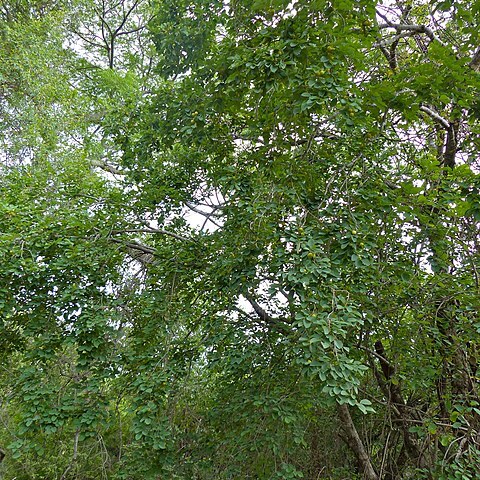Male flowers: buds ovoid; sepals 5(6), imbricate; petals absent; disk extrastaminal, annular, shallowly lobed, the lobes alternating with the sepals; stamens (4)5–7, united for half to two-thirds of their length into a column, anthers basifixed, introrse, thecae parallel, longitudinally dehiscent; pistillode (non-functional ovary) usually trifid.
Fruit globose, subdrupaceous, tardily septicidally dehiscent after the fleshy layer has been eaten by frugivores, and when the sun has dried out the endocarp; exocarp smooth, becoming wrinkled and shiny on drying; mesocarp spongy; endocarp thickly bony or woody, trilocular.
Female flowers: pedicels bibracteolate; buds and sepals as in the male; disk cupular; ovary 3-locular, with 2 ovules per loculus; styles 3, connate at the base, bifid, the stigmas coiled backwards.
Flowers in axillary pedunculate or subsessile bracteate dense few-(up to 12-)flowered cymes, or females solitary, arising among or below the leaves.
Seeds solitary per loculus by abortion, ecarunculate; albumen fleshy; cotyledons broad, flat.
Leaves alternate, petiolate, stipulate; blades simple, entire, penninerved.
Dioecious or rarely monoecious trees or shrubs.
Indumentum simple.

